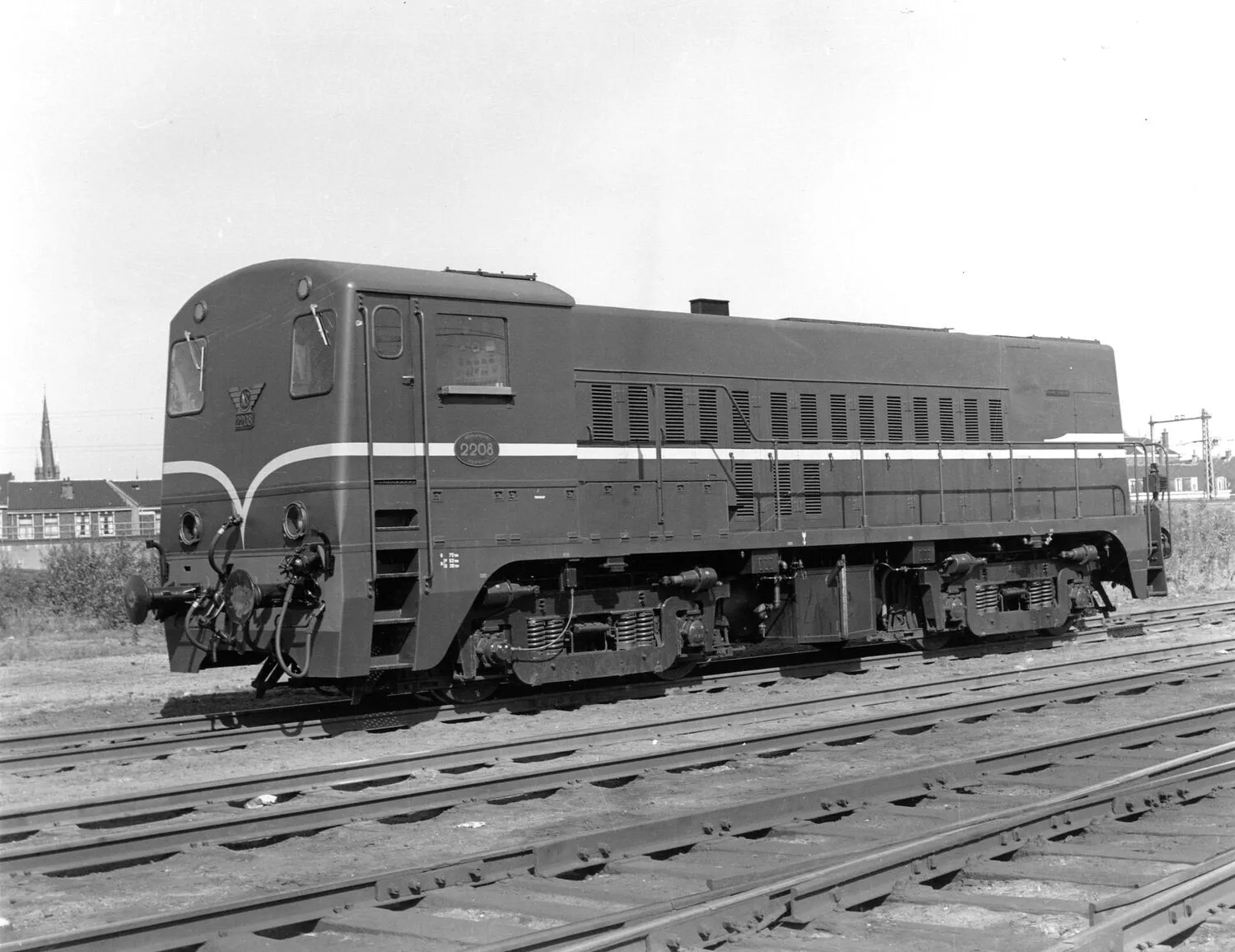
Source: nl.wikipedia.org
Class 2200
Vehicle type:
Registration country:
Railway companies:
1950s
In the early 1950s, NS decided to replace its remaining steam
locomotives with diesel-electric models. This decision led to the
order of 280 locomotives, split between the 2200 and 2400 series,
facilitating the retirement of the last steam locomotive in January
1958.
The 2200 series was based on a reliable American design, with mechanical components from Baldwin, electrical systems by Westinghouse, and diesel engines from the National Supply Company. The first 100 units were manufactured by Heemaf in Hengelo, with subcontracted parts from Allan in Rotterdam and Stork. The remaining 50 units were produced by the French consortium MTE, featuring mechanics from Creusot-Loire and electrics by Jeumont-Schneider.
Boasting a maximum speed of 100 km/h, the 2200s were versatile, serving both passenger and freight services. They were initially deployed on non-electrified routes and remained in regular service until the advent of Plan U trainsets in 1962.
From 1970 to 1987, they were integral to operations involving modified Plan E carriages, especially in push-pull configurations, addressing the diesel multiple unit shortage post-Spoorslag '70.
In 1996-1997, four units were briefly employed by Lovers Rail for passenger services between Amsterdam, Haarlem, and IJmuiden.
The 2200 series was based on a reliable American design, with mechanical components from Baldwin, electrical systems by Westinghouse, and diesel engines from the National Supply Company. The first 100 units were manufactured by Heemaf in Hengelo, with subcontracted parts from Allan in Rotterdam and Stork. The remaining 50 units were produced by the French consortium MTE, featuring mechanics from Creusot-Loire and electrics by Jeumont-Schneider.
Boasting a maximum speed of 100 km/h, the 2200s were versatile, serving both passenger and freight services. They were initially deployed on non-electrified routes and remained in regular service until the advent of Plan U trainsets in 1962.
From 1970 to 1987, they were integral to operations involving modified Plan E carriages, especially in push-pull configurations, addressing the diesel multiple unit shortage post-Spoorslag '70.
In 1996-1997, four units were briefly employed by Lovers Rail for passenger services between Amsterdam, Haarlem, and IJmuiden.
1995
In 1995, 25 units were sold to the Belgian Railways (NMBS) for high-speed line construction
and port services in Antwerp, renumbered as Series
76.
Several units are also acquired by Strukton for construction and inspection duties, receiving new numbers and liveries.
Several units are also acquired by Strukton for construction and inspection duties, receiving new numbers and liveries.
Do you have additional informations regarding this vehicle?
Help us writing the history of Class 2200! Your knowledge is precious for us and the entire community, do not hesitate to share your facts, photos or videos:
Latest update on the 25th of February 2024 at 13:26
Contributor(s): Tudor C.
Discussion forum


